
December 2022 New England Bi-Monthly Regional Update #1
From Mick Devine, NATCA New England Regional Vice President
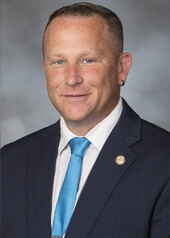
I hope you all enjoyed your Thanksgiving holiday. As we enter into a generally quiet time in the FAA as most of FAA management is off between Thanksgiving and New Year’s Day, we are beginning to ramp things up in NATCA. In November, NATCA National put out an email that may have just been glossed over if you didn’t understand the importance of its impact on all of our facilities. I’d like to explain why it is the single most important thing to happen to this profession since pay reclass.
We have been talking about staffing for a while now, even so far as to introduce the fight we were about to embark on. Each year, FAA Finance must submit a Controller Workforce Plan (CWP) to congress. Congress uses this info to fund the staffing of the FAA through the appropriations process. FAA Finance does not consider safety or the operation in this process, but rather what would be the cheapest way to fund the operation. For instance, it is way cheaper to have everyone on six-day workweeks than it is to hire more controllers. Grinding our members to the bone is not the safest way to conduct business, and it has a tremendous effect on all our family lives.
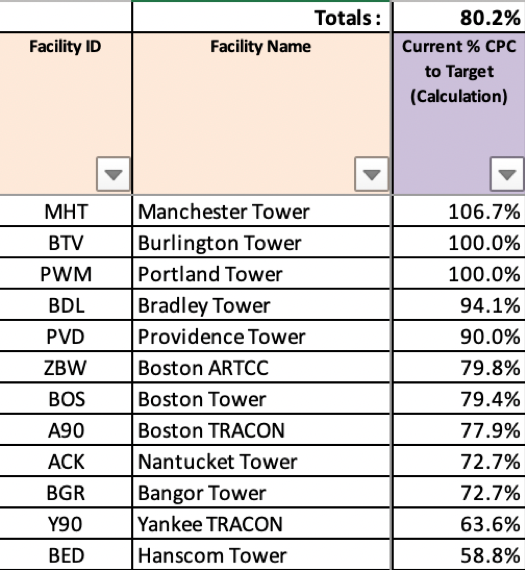
So, what is FAA Finance reporting to Congress this year? They are reporting, with a straight face, that the Air Traffic Controller ranks are staffed nationwide at 103%. What is the reality? The latest Priority Placement Tool (PPT) shows the ATC facilities nationwide at a whopping 80.1%, with only thirty of our three hundred thirteen facilities being staffed at or above 100%. You read that right, the FAA is reporting to Congress that we are 23% higher staffed than we actually are. Mind you, folks, these are not people who have ever worked in an Air Traffic facility, but are willing to tell us how many people we need to perform our jobs. The chart shows what our current staffing is at our FAA facilities here in New England. All of these facilities are being reported as above 100% by the metric FAA Finance uses.
NATCA has been pushing to get FAA Finance out of the practice of reporting our staffing to Congress for over fifteen years. About six months ago, President Rich Santa decided to take this fight on again, but with new tactics and strategy. Throughout the six months, the naysayers were out in full force saying that nothing would change and that this would never happen. Rich never flinched. The original plan was to aim not to get rid of FAA Finance out of the equation, but rather to codify into law what information they must use in their reporting. This was the major change in strategy.
Using the summer fiasco of ATC staffing delays, along with the upcoming Thanksgiving travel holiday, as leverage, NATCA was able to pressure the FAA into the following agreement:

While this is not an immediate fix (no staffing fix is immediate), it lays the foundation of our staffing being based on actual real-time staffing data with staffing levels collaboratively agreed to staffing levels from this day forward. Staffing help is on the way.
From Scott Robillard, NATCA New England ARVP
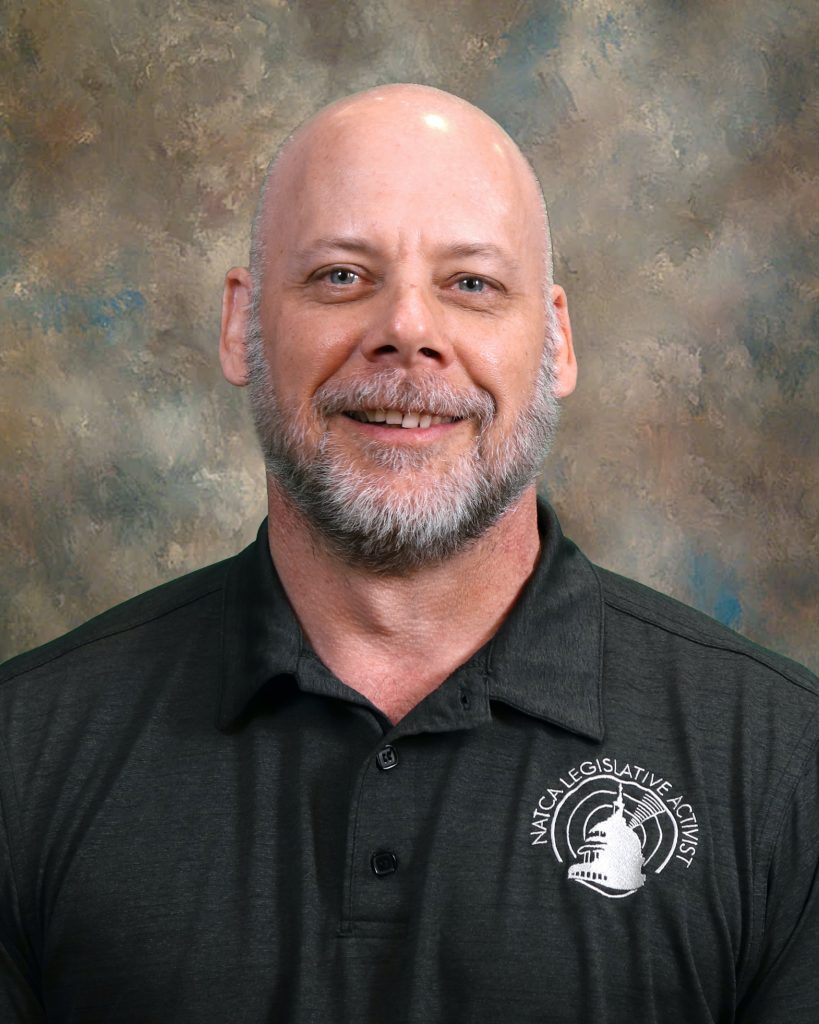
Hello NATCA New England!
This month I am going to talk about two things: Seniority and Watch Supervision.
First, seniority. But before we get to NATCA’s seniority, let’s talk about seniority in general. When a workforce decides to unionize, a seniority system is one of the first things put into place. Keep in mind, this can only be done via collective bargaining.
When put into place, it solves one of the major problems that exist in all employment: favoritism and discrimination. Correcting this behavior is a central belief of unions. That central belief is that all workers should be treated equally and fairly.
Prior to a seniority system being put into place, management is in total control. Think for a moment what your facility would look like if the ATM of your facility just decided things such as:
- What RDOs you are placed on. Maybe even choosing to “spread out” the experience level of crews
- How annual leave gets requested and approved
- How ties in requests are broken
- Who gets the overtime
It’s easy to see where favoritism and discrimination can pop up when an Agency manager has complete control. It pits worker against worker while they try to curry favor so they can live their lives.
The oldest CBA I have is from 1993. During this period, seniority was determined at the local level. This introduced new problems and seniority changed from building to building. This too was ripe for manipulation for personal gain. Better than it was, but not perfect.
In the 1998 CBA, seniority was changed to “as determined nationally” with one seniority list. This policy is set at the bi-annual NATCA National Convention. Every year, there are proposed amendments that the delegates vote on. Generally, they are voted down. Why? Any change takes seniority from one group of members and gives it to another, and it opens old wounds.
Think of the nightmare it would cause your local if 2 members dropped from #6 and #7 to #12 and #13 and 3 members jumped from #21, #22, #24 to #15, #16, and #18. Chaos!
But seniority is NOT absolute, and it is not intended to be so. Now, I am sure a reader will want to challenge this statement.
If seniority was absolute, then the member who sits at #1 in seniority would take all their annual leave prior to anyone else selecting any leave; all 26 days. Why not? Seniority does have its privileges. Why go first for some of the leave selections and not all of it?
It is obvious why we don’t do that. Instead, we make smart decisions about what is reasonable for the number of days per round, and we take turns. Each round starts back at the top of seniority. We do the same for Overtime and for CIC and in many other areas of the CBA.
The second topic I want to explore is what kind of “authority” does an Operational Supervisor (OS) have?
As a position of record, an OS does not have any “authority”. Generally, they are assigned work by an Air Traffic Manager (ATM) or Operations Manager (OM) to implement the agreements made between the Agency and the Union. They don’t make any decisions on policy. If they are assigned to build the watch schedule, they complete the work as the Facrep and Agency negotiated it.
Now you may offer the position that the OS approves and denies leave, shift changes, and manages the operation, but I would counter and say…
Well no, not really. The “authority” people normally think is attached to an Operational Supervisor is tied to the Watch Desk via FAAO 7210.3 2-6-1 and (outside of performance, discipline, and site coordinator for drug or alcohol testing) is also given to a CIC.
If you don’t know exactly what paragraph 2-6-1 says, I suggest you spend some time reading it.
Labor Management Relations
From Carrie Cassano, NATCA New England LR Coordinator, BDL
Since the last Labor Relations Update from Jake Detwiler (ZBW) in August, we have expanded our team. Nick Marangos (A90) was selected as Lead. Joe Allen (ZBW) is heading up the research division with the help of Hanan Wiseman (A90), and I will be the Coordinator. If you need to reach us, please e-mail [email protected]
The 4th Quarter grievance docket was very light, with a single grievance out of Y90. On Tuesday, November 1st, Nick Marangos and Bryan Krampovitis sat at the table with Agency representatives from the Boston District and FAA Labor Relations but could not reach a decision. Bryan continued to reach out and settled the grievance at the ARVP level. Since all outstanding grievances were resolved, the 4th Quarter PAR initially scheduled for December 6th was canceled.
Drug & Alcohol Committee
From Jim Basford, NATCA New England Drug & Alcohol Rep, A90
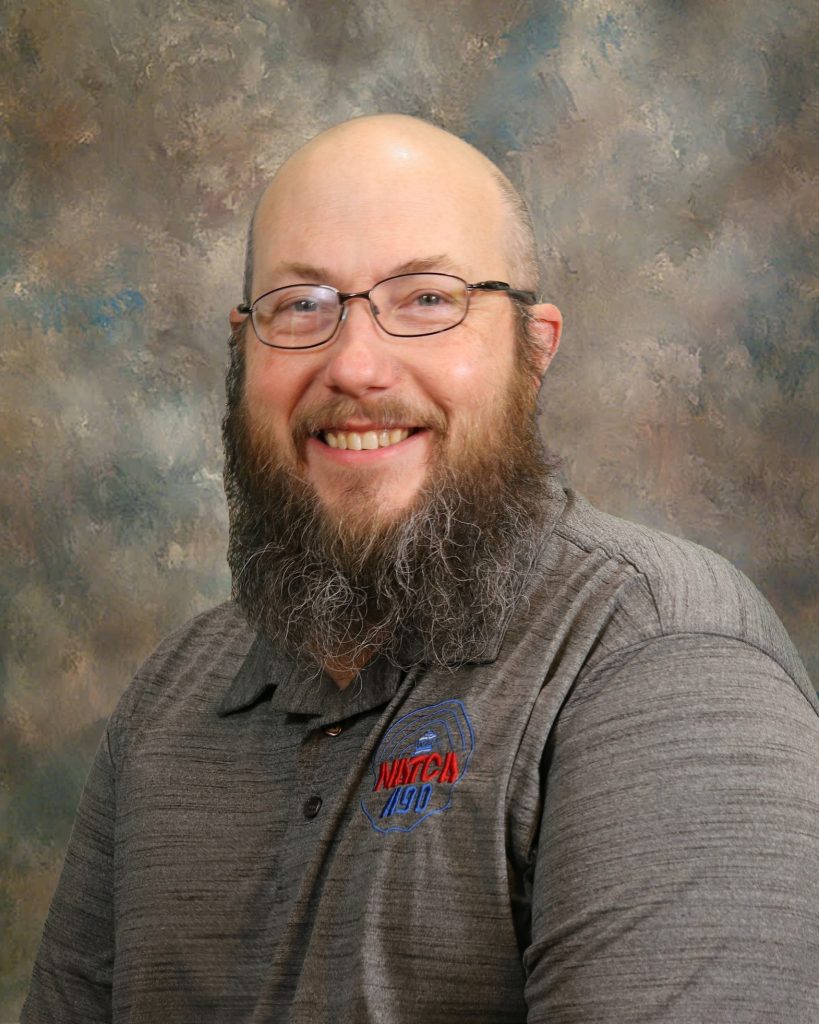
Hello all, I wanted to cover a few things this month. The first will be about a new form the FAA is implementing with regard to shy bladder events during drug testing. And the second is a bit of a refresher on the DOT 3910.1D and specifically how it pertains to off-duty activity given the Festivus season is upon us.
First, the agency has determined they need more paperwork. They have developed a form to be given out to employees who are unable to produce a urine sample on the first attempt. The 3910.1D states:
“The collector will note the time of the first attempt on the CCF and notifies the SC. If the donor states that he or she could provide a specimen after drinking some fluids, the donor may drink up to 40 ounces of fluid distributed reasonably through a period of up to 3 hours. For example, an 8-ounce glass of water every 30 minutes, but not to exceed a maximum of 40 ounces over a period of 3 hours. However, the donor is not required to drink any fluids during this waiting time.”
Similar language exists in the DOT Drug and Alcohol testing guide. The FAA has made another form for this same information with a signature line for the employee to sign. An agreement has been reached at the national level that you are not required to sign this form and NATCA advises that you don’t. If the site coordinator attempts to compel you to sign it let your rep know. Remember you are entitled to a rep under Art. 73 Sec. 3 of the CBA, I suggest you always exercise that right.
Now let’s talk about Festivus for the rest of us. The holiday season has started and it is a time for celebration. We as TDP employees do have to consider some things while off duty that could have an impact on us. First off, despite cannabis being legal in every New England state except the Live Free or Die state, it is still a schedule 1 drug federally. Schedule I drugs, substances, or chemicals are defined as drugs with no currently accepted medical use and a high potential for abuse. DOT 3910.1D XI 1 a. States: Illegal Drugs. All employees are prohibited from on or off-duty use, possession, distribution, or trafficking of controlled substances (as defined in 21 U.S.C. §802(6)).
Lastly, let’s talk about alcohol. DOT 3910.1D XI 8 b.: “The agency will initiate action to remove a covered employee from Federal service in the case of off-duty misuse of alcohol as measured by an alcohol concentration of 0.04 or greater, or an off-duty concentration that results in an arrest, on a confirmation test.”
If you are arrested for an alcohol-related incident you must inform your ATM before your next shift and the flight surgeon within 48 hours. If you are in jail and have limited phone access you can call your FacRep and ask them to make the notifications for you.
Stay safe and happy holidays!
New England Philanthropy
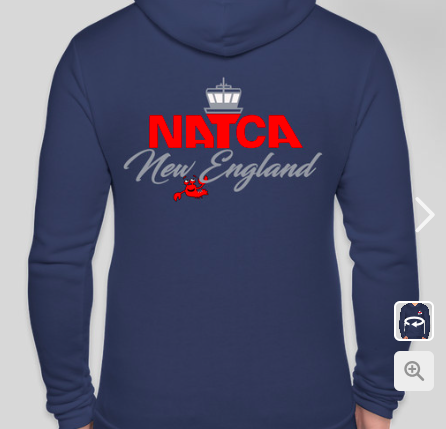
NATCA New England has started a fundraiser to benefit the DRC and help fund the DRF!
NATCA’s Disaster Relief Fund was established in 1992 after Hurricane Andrew adversely affected members. Since then, the Disaster Response Committee was formed. They’ve helped members across the country who have been affected by hurricanes, tornadoes, wildfires, flooding, and other natural disasters. Please purchase a shirt and/or hoodie to help us replenish the Disaster Relief Fund so the DRC can continue to help NATCA members in need!
NATCA and A90 Partner with Nashua Children’s Home and Family Promise of Greater Southern NH to brighten children’s holiday season. NATCA members help the children who reside at Nashua Children’s Home by purchasing gifts on their wish lists. Employees at A90 either purchase or donate money towards gift giving, and the gifts are then wrapped up before being dropped off the week before Christmas. A90 has partnered with NCH for over 10 years now and on average donates over $200 worth of presents for 40-45 children. For the last several years, NATCA Charitable Foundation has donated $1.500 towards A90’s efforts. During the month of December, A90 also holds a raffle to help benefit the children who reside at Family Promise’s facility in downtown Nashua. Employees buy raffle tickets and all money taken in is donated to help purchase warm winter clothing for the children. Prizes for the raffle are donated and there are gift cards to Bass Pro and area restaurants. In the last 3 years, A90 has donated between $2,500-$3,500, in addition to the donations given to NCH. If you are interested in donating toward either NCH or Family Promise please email Lisa Fulford at [email protected].


Each year, ZBW collects gifts to donate to local children who may not otherwise get gifts for the holiday season. This year, they are supporting the Front Door Agency and Nashua Children’s Home. If you would like to help ZBW purchase gifts for these children, you can contact Katie Johnstone at [email protected]. You can also Venmo her at @ktjstone55 by December 10th to make a monetary donation toward gifts.
BOS ATCT is holding a t-shirt fundraiser to benefit NATCA’s Charitable foundation which supports small and large causes in neighborhoods across the country!
Click here to get your short or long sleeve BOS NATCA shirt!


